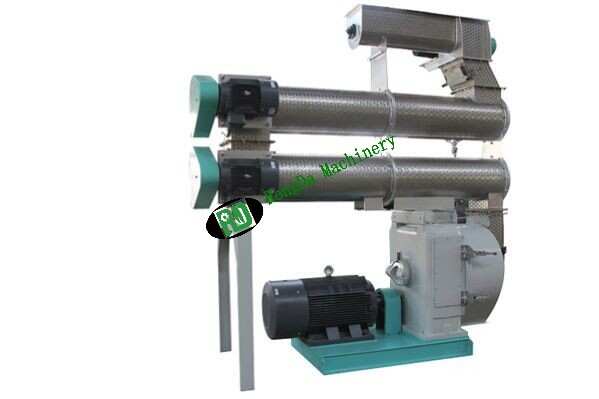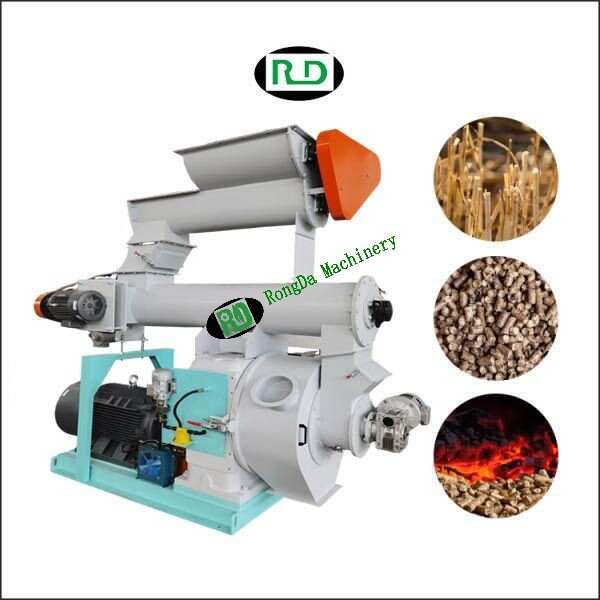Welcome to Rongda Machinery Co., Ltd
Toggle Navigation
As the demand for sustainable energy solutions grows, wood pellets have emerged as a popular and eco-conscious choice for heating homes, businesses, and even industries. With their low emissions, renewable nature, and high efficiency, they offer a compelling alternative to traditional fossil fuels. However, a common question many homeowners and small-scale energy users ask is: Is it worth making your own wood pellets? While purchasing commercially produced pellets offers convenience, producing them yourself involves many factors that could influence your decision. In this article, we’ll weigh the pros and cons of crafting your own wood pellets and assess whether it’s a worthwhile investment.

Wood pellets are small, cylindrical pieces made by compressing biomass—typically sawdust, wood chips, or other organic waste materials—into a uniform shape. These pellets are typically produced using a pellet mill, which applies pressure to compress the raw wood into dense, efficient fuel. Widely used in pellet stoves, boilers, and industrial furnaces, these pellets offer an effective and clean way to heat spaces.
The main attraction of wood pellets is their efficiency. They burn hotter and cleaner than traditional firewood, generating less ash and occupying less storage space. With an increasing focus on reducing carbon emissions, the shift to wood pellets from fossil fuels like coal, natural gas, and oil is gaining momentum.
Creating your own wood pellets can have several appealing benefits, especially for those aiming for self-sufficiency or seeking to lower energy costs. Here are some key advantages:
1. Significant Cost Savings
One of the primary reasons people consider making their own wood pellets is the potential for long-term savings. Commercially produced pellets often come with a hefty price tag due to expenses like transportation, distribution, and seasonal demand. If you have access to free or low-cost raw materials, such as sawdust from local woodshops or leftover wood from construction projects, you could substantially reduce your fuel costs.
Though the initial investment for a pellet machine and related equipment can be steep, producing your own pellets can lead to significant savings, especially for those who rely heavily on wood pellets for heating. Over time, this approach could save you hundreds of dollars each year.
2. Total Control Over Pellet Quality
When you make your own wood pellets, you have full control over the quality of the product. Commercial pellets sometimes contain additives, binders, or chemicals to improve durability or simplify production. By using your own raw materials, you can ensure the pellets are free from harmful substances, making them a safer, cleaner option for burning.
Moreover, making your own pellets allows you to experiment with various wood types (hardwoods vs. softwoods) to adjust their burn rate and heat output, tailoring the product to your specific heating needs.
3. Environmental Impact Reduction
Producing your own wood pellets can have a lower environmental impact than purchasing pre-made options. By sourcing your materials locally, you cut down on the carbon footprint associated with the transportation of commercially produced pellets. Additionally, you can use wood waste materials that might otherwise end up in landfills. Sawdust, wood chips, and recycled wood can be repurposed into high-quality fuel, reducing waste and contributing to a more sustainable energy solution.
Choosing wood pellets also means reducing reliance on fossil fuels, further decreasing greenhouse gas emissions.
4. Enhanced Self-Sufficiency
Making your own pellets can provide a sense of energy independence. Rather than relying on external suppliers for heating fuel, you can produce your own pellets on-demand. This gives you more control over your heating supply and protects you from the volatility of energy prices and market fluctuations.
For those in remote or rural areas, where access to commercial pellets may be limited or expensive, having the ability to produce your own fuel can offer peace of mind and a steady supply of heating material.
5. Customization and Flexibility
When you create your own wood pellets, you can customize them to suit your specific needs. Whether it’s adjusting the density, size, or wood type used, you have the flexibility to fine-tune your pellets to optimize burning efficiency. This customization can reduce ash production, improve heat output, and make the pellets more suitable for your specific application, whether for home heating or industrial use.
Additionally, experimenting with alternative raw materials or mixing different wood types allows for more creativity and flexibility than purchasing pre-made pellets.

While the benefits are clear, creating your own wood pellets isn’t without its challenges. The process requires a significant investment of time, money, and effort. Here are the main challenges to consider:
1. High Initial Investment
The most significant obstacle for many is the upfront cost of equipment. A pellet mill, which compresses the wood into pellets, can range from hundreds to several thousand dollars. Other essential equipment, including drying systems, wood chippers, and storage units, can further add to the costs.
For individuals unsure of how much raw material they’ll have access to or how much pellet production they will actually use, this investment may feel risky. Smaller-scale users, such as homeowners, may find the financial commitment overwhelming.
2. Time and Labor Intensive
The process of producing wood pellets is labor-intensive and requires considerable time. The steps involved—from sourcing raw materials, drying the wood, compressing it into pellets, to cooling and storing the final product—demand careful attention and effort.
For those with limited free time or busy schedules, the process might not be practical. It may feel like a burden, especially for small-scale users who could benefit from the convenience of pre-made pellets.
3. Space Requirements
Creating wood pellets takes up a considerable amount of space. You’ll need a designated area for the machinery and storage of both raw materials and finished pellets. If you don’t have the space, either indoors or outdoors, this can be a significant limitation.
Larger-scale operations will require more storage for both raw materials and finished products, making it more difficult for those in smaller living situations to consider pellet production as a viable option.
4. Ongoing Maintenance and Technical Know-How
Pellet mills require regular maintenance to ensure they function optimally. This includes cleaning, lubrication, and repairs. Additionally, you’ll need to understand the technical aspects of the machinery to troubleshoot any issues that arise during production.
If you don’t have the mechanical skills or time to maintain the equipment, the process could quickly become frustrating and costly.
5. Raw Material Availability
Sourcing raw materials, such as sawdust, is a crucial factor. If you live in an area where wood waste is limited or expensive, producing your own pellets may not be feasible. Additionally, securing a consistent supply of materials is essential for long-term production.
Ultimately, whether making your own wood pellets is worth the investment depends on a variety of factors, including access to raw materials, available space, and the time and money you are willing to commit. For those who can access inexpensive biomass, have the space and equipment, and are committed to the process, making your own wood pellets can be an environmentally friendly and cost-effective choice.
However, for individuals with limited space, time, or access to cheap raw materials, buying pre-made pellets may be a more convenient and practical option. Commercial manufacturers can produce pellets at a much larger scale, offering competitive pricing and the convenience of ready-to-use fuel.
Carefully evaluating your personal circumstances will help you determine if making your own wood pellets is a wise investment for your home or business.